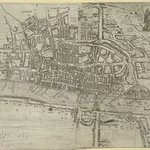Mapa catalogado
The Newest and Exactest MAPP of the most Famous Citties LONDON and WESTMINSTER, with their Suburbs; and the manner of their Streets:

Título completo:The Newest and Exactest MAPP of the most Famous Citties LONDON and WESTMINSTER, with their Suburbs; and the manner of their Streets:
Tamaño físico:20 x 30 cm

